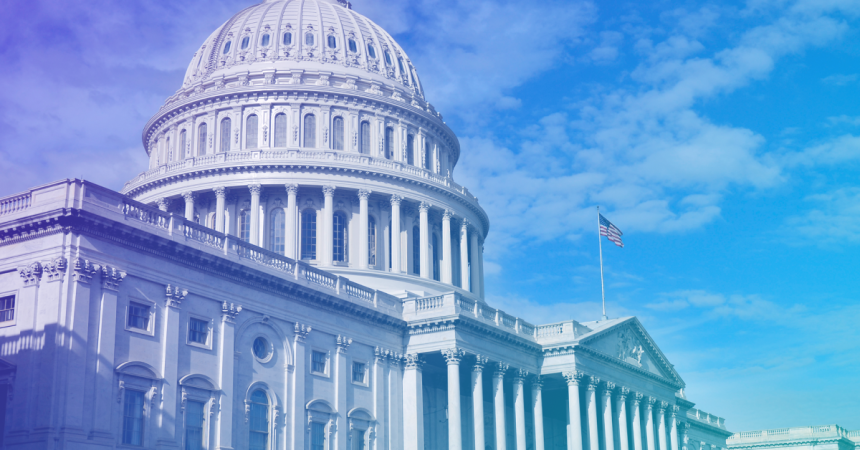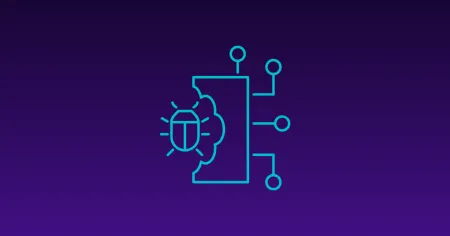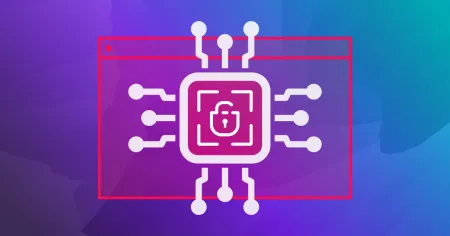Blog
Feb 12, 2025
Addressing the Unique Cybersecurity Challenges Faced by Government Agencies
Explore the unique cybersecurity challenges government agencies face and how tailored strategies can protect national security and public trust.
8 min read

Cybersecurity is at the heart of modern governance, protecting everything from critical national infrastructure to personal citizen data. As cyber threats grow more sophisticated, government agencies are facing increasing pressure. These organizations are prime targets for both cybercriminals and state-sponsored attackers, and the fallout from a breach could go far beyond financial loss—it could shake public trust and jeopardize national security. To navigate these challenges, government agencies need a cybersecurity approach that’s tailored to their specific needs—whether it’s dealing with complex regulations, outdated systems, or the wide variety of services they oversee. Without a targeted strategy, the risks to safety, privacy, and public confidence remain too high.
Government agencies are tasked with securing a vast range of critical information and services, which places them in a unique and often precarious position when it comes to cybersecurity. While every organization faces the threat of cyberattacks, government agencies are particularly vulnerable due to a combination of legacy infrastructure, complex regulatory frameworks, tight budgets, and a high level of scrutiny from attackers. These challenges make it crucial to understand why government cybersecurity efforts need a distinct, tailored approach. Let’s break down the key challenges these agencies face.
For government agencies, the regulatory landscape is a labyrinth of rules and standards that must be followed to ensure data protection and operational security. Agencies are required to comply with a mix of federal mandates, such as the Federal Information Security Modernization Act (FISMA) and the National Institute of Standards and Technology (NIST) Cybersecurity Framework, as well as international standards like the General Data Protection Regulation (GDPR) for those managing European citizens’ data.
While these regulations are in place to protect sensitive information, they can be overwhelming, especially for agencies with limited resources. For instance, FISMA requires a stringent set of controls, continuous monitoring, and detailed documentation—all of which can slow down decision-making. Furthermore, the need to comply with both federal and state-level regulations complicates the situation, forcing agencies to juggle multiple frameworks at once.
Although compliance is essential for securing data, it often comes with trade-offs. The bureaucratic hurdles associated with adhering to these regulations can lead to slow responses and decision-making processes, making it harder for agencies to implement cybersecurity measures in a timely and flexible manner. Plus, the focus on compliance can sometimes divert attention from other critical areas, like investing in new security tools or conducting ongoing employee training.
Many government agencies continue to rely on outdated IT systems, some of which were developed decades ago. Unlike private organizations, which can more easily adopt new technologies and modernize their infrastructure, government agencies are often locked into systems that are costly and time-consuming to replace.
These legacy systems are particularly vulnerable to cyberattacks because they may not have been designed with current security needs in mind. And since many of these systems run on outdated software that no longer receives patches or updates, they present an easy target for cybercriminals. The challenge is compounded by the fact that many government agencies rely on proprietary systems that are incompatible with newer technologies, which limits their ability to enhance security.
To make matters more difficult, government agencies must balance maintaining these legacy systems with upgrading their infrastructure to meet modern cybersecurity demands. This delicate balancing act often leads to gaps in security and opens the door for cybercriminals to exploit vulnerabilities.
For many government agencies, budget constraints are a harsh reality. While certain departments—such as defense and intelligence—receive substantial funding, other agencies are forced to make difficult choices about where to allocate resources. Cybersecurity often takes a backseat to more immediate concerns, such as public service delivery or infrastructure maintenance.
This funding shortage affects nearly every aspect of an agency’s cybersecurity efforts. From hiring qualified personnel to investing in the latest security technologies, the inability to allocate enough funds leaves many agencies vulnerable to attacks. Cybercriminals continuously adapt their tactics, and government agencies must do the same—yet many struggle to keep pace due to financial limitations.
Training is another area where the budget crunch is felt. Without a dedicated budget for cybersecurity training, agencies find it challenging to ensure that employees have the skills to identify and defend against the latest threats. Even if a workforce is competent today, the rapidly changing threat landscape means continuous education is crucial. Unfortunately, without adequate resources for training programs, many government agencies are at a disadvantage when it comes to keeping their staff prepared.
Government agencies handle a wealth of sensitive data, from personal information about citizens to classified national security details. Ensuring the privacy and confidentiality of this data is critical—not just to protect against financial loss but also to maintain public trust. A single data breach could erode that trust and have lasting consequences, not just for the agency but for the entire government system.
Navigating the complex web of data privacy regulations and cybersecurity compliance frameworks, such as the Health Insurance Portability and Accountability Act (HIPAA) for healthcare-related data or the Privacy Act of 1974, only adds to the challenge. These rules mandate specific protections and penalties for noncompliance, and keeping track of them can be a full-time job in itself. At the same time, the volume of data agencies handle is growing rapidly, and the sophistication of cyberattacks is evolving at an even faster pace, making it harder to ensure compliance.
In addition to internal challenges, government agencies must also contend with the legal and logistical complexities of cross-border data flows. Whether it’s a contractor working from another country or data being stored in a cloud service, agencies must ensure that they’re following strict data residency requirements. Failing to comply with these rules can not only invite legal penalties but also expose sensitive data to further risks.
Cybersecurity risks don’t stop at the walls of government agencies; they extend to the third-party vendors and contractors that work with them. The infamous SolarWinds cyberattack demonstrated just how vulnerable government agencies can be to supply chain attacks, where cybercriminals infiltrate systems through trusted partners to gain access to sensitive networks.
Government agencies often rely on contractors for software, hardware, and data services, which makes them vulnerable to the same risks these vendors face. Ensuring that vendors adhere to robust cybersecurity standards is an ongoing challenge. Often, these vendors themselves lack the resources or expertise to effectively protect against cyber threats, which creates an additional layer of risk for agencies.
Given this interconnectedness, agencies must expand their cybersecurity frameworks to include supply chain risk management. This means implementing policies and controls that ensure third-party vendors meet the same stringent cybersecurity requirements that agencies themselves follow. It’s a daunting task, but it’s necessary to prevent a breach from entering through the back door.
Adopting up-to-date security tools and technologies is critical for government agencies to defend against the ever-evolving cyber threat landscape. As cyberattacks become more sophisticated, relying on outdated software or hardware increases the risk of a successful breach. Modern tools, such as next-gen firewalls, intrusion detection systems, and encryption technologies, help agencies stay ahead of attackers by offering real-time threat detection and more efficient responses. Regularly updating and integrating the latest security technologies ensures a robust defense and allows agencies to address emerging threats more effectively.
Cybersecurity is a shared responsibility, and collaboration is essential. Government agencies should work together to share threat intelligence, best practices, and lessons learned. In addition, engaging with the private sector is invaluable. Private companies, often at the cutting edge of cybersecurity technology, can offer expertise and tools that many agencies might not have access to otherwise. This exchange of knowledge and resources strengthens defenses across the board and helps agencies respond more quickly to new threats.
A strong cybersecurity culture starts at the top. When leadership prioritizes cybersecurity, it sets a tone that permeates the entire agency. Building this culture means encouraging all employees, from the IT team to frontline workers, to understand the importance of cybersecurity and adopt good practices. Regular training on topics like phishing prevention, secure password management, and safe browsing can help foster this mindset. A proactive, security-first attitude across the entire workforce can significantly reduce the risk of human error, one of the most common causes of breaches.
Regular testing and vulnerability assessments are crucial for identifying weaknesses before attackers can exploit them. Penetration testing simulates cyberattacks to uncover system vulnerabilities, while vulnerability scanning continuously checks for potential security gaps. Both practices help agencies stay ahead of the curve by detecting and addressing issues as soon as they arise. By testing and assessing systems on a regular basis, agencies can ensure their defenses remain strong and responsive to new and evolving threats.
Government agencies face a unique set of cybersecurity challenges, from complex regulations and outdated systems to tight budgets and increasing threats. Proactive steps—such as investing in modern tools, fostering collaboration, building a security-first culture, and conducting regular testing—are vital in staying ahead of evolving threats.
Now more than ever, government agencies must prioritize and invest in comprehensive cybersecurity programs. By doing so, they not only protect sensitive data but also strengthen public trust and national security. The time to act is now—empower your agency to face these challenges with confidence and resilience.
Stay in the know: Become an OffSec Insider
Get the latest updates about resources, events & promotions from OffSec!
Latest from OffSec

Enterprise Security
How OSCP Holders Can Lead Their Teams to Greater Cybersecurity Resilience
Champion OSCP training in your organization to build a unified, resilient security team.
Apr 11, 2025
6 min read

Research & Tutorials
CVE-2024-57727: Path Traversal Vulnerability in SimpleHelp Web Application
CVE-2024-57727 lets attackers read sensitive files via path traversal in SimpleHelp. Learn more about how attackers exploit this flaw.
Apr 10, 2025
3 min read

Penetration Testing
AI Penetration Testing: How to Secure LLM Systems
Explore how AI penetration testing enhances LLM security, addressing unique vulnerabilities and improving cyber defenses.
Apr 3, 2025
8 min read